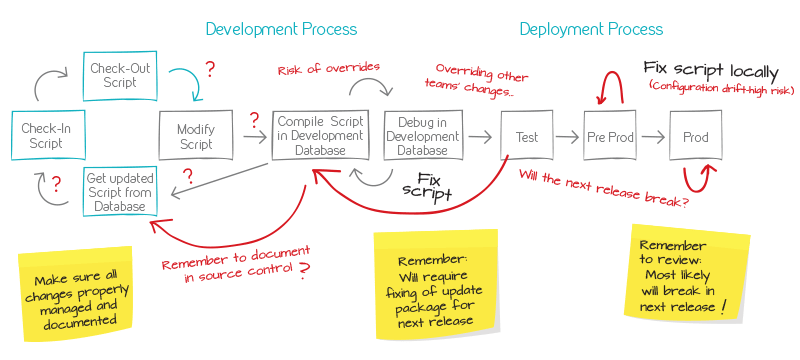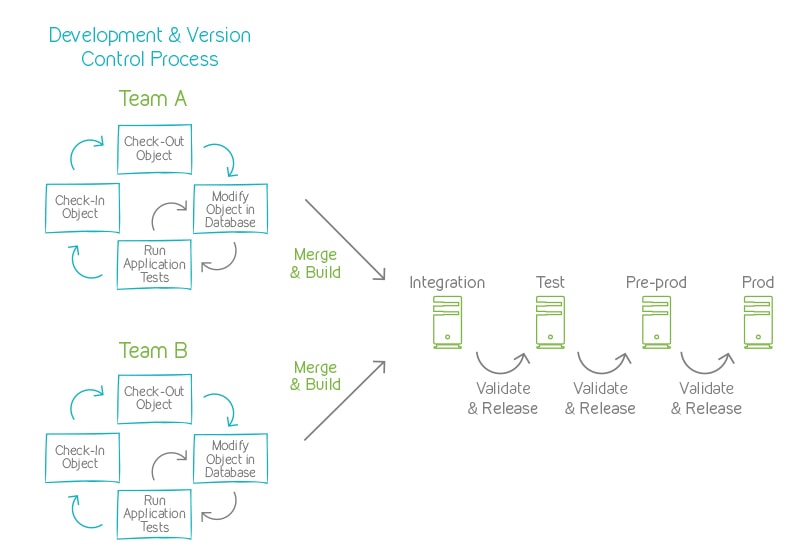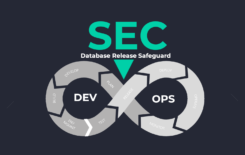While database development differs from traditional software development, developers and DBAs can and should apply agile database development methodology and continuous principles to the database. In order to do this, the DBA has to find database development lifecycle solutions for certain challenges that arise. With constant pressure for technology companies to release frequent updates to applications, overcoming common challenges in managing the database lifecycle is always a concern.
By implementing the following four database development lifecycle solutions, you will spend less time retracing steps or wasting time tracking down information and documentation, which are unnecessary and expensive.
Database Release Automation
Automating database branches and consolidating the changes into an integration environment is necessary to deploy to production. In fact, it provides a safety net eliminating the possibility of overriding critical changes implemented in the target environment.
In addition, it breaks down silos between development and operations, enabling continuous delivery for the database. This saves hours and hours of valuable development time otherwise spent on manual processes because it automatically generates deployment scripts.
Database release automation also helps avoid human errors that can lead to devastating crashes and cost your company thousands – even hundreds of thousands – of dollars to rectify. For that reason, it is the first and maybe most important of the database development lifecycle solutions.
Database Merge and Build Automation
Continuous integration and delivery have become the norm for application code in today’s agile environment. However, as we’ve discussed in previous blogs, the database is frequently being left behind. Your database development lifecycle solutions need to include bridging the gap between application code and database development, enabling true merge and build automation for the database.
The benefits of merge and build automation include:
- The ability to deploy database changes in accordance with business requirement.
- The ability to utilize impact analysis with three-way, baseline-aware analysis.
- The ability for developers to merge database code with unparalleled ease.
According to this this survey, only 13% of companies reported that they are able to automate the continuous delivery process for the database, with the rest plugging the automated process with various manual steps. This lack of automation means substantial deployment risk and the increased risk of database downtime.
Database Enforced Source Control
A database configuration and change management platform allows DBAs to add real source control management functionality to their database world.
Source control should interface with leading SCM software packages, which enables a complete and safe collaborative development process. This is similar to the familiar and proven proccess for native/application code development (Java, C#, C++, etc.).
Your source control solution guarantees a single source of truth for your database, a crucial database development lifecycle solution. This enables teams to work safely and simultaneously within the same environment, eliminating the possibility of overriding critical changes made by another developer.
Skipping out on DESC as part of your database development life cycle can mean lengthy development cycles that include time-consuming, frustrating manual processes.
Database Enhanced Security and Regulatory Compliance
Security and regulatory compliance are increasing concerns for companies in today’s complex business climate. Unauthorized database changes can spell disaster for your organization. Therefore, an enhanced security mechanism needs to be one of your organization’s database development lifecycle solutions, in order to control changes to database objects and enforce roles and responsibilities.
Enhanced security and regulatory compliance should define and enforce database change policies through the assignment of roles and responsibilities. This prevents unauthorized and undocumented changes to the database, and provides the ability to define access levels down to the individual object and data level.
It should also provide a complete, reliable audit trail while minimizing manual documentation requirements for your development team and prevent team members from straying from the defined, efficient process, ensuring smooth development and deployment as well as provide segregation of duties (SoD).
Protect The Data
For DBAs, protecting your company’s valuable data is a primary concern. Implementing the above database lifecycle management solutions can significantly reduce the need for costly delays, application glitches, back outs, and most importantly, database downtime.
While it is possible to adopt a single tool or solution to address a particular pain point – like source control for the database – all four of these database development lifecycle solutions are necessary to enable true database deployment automation.








